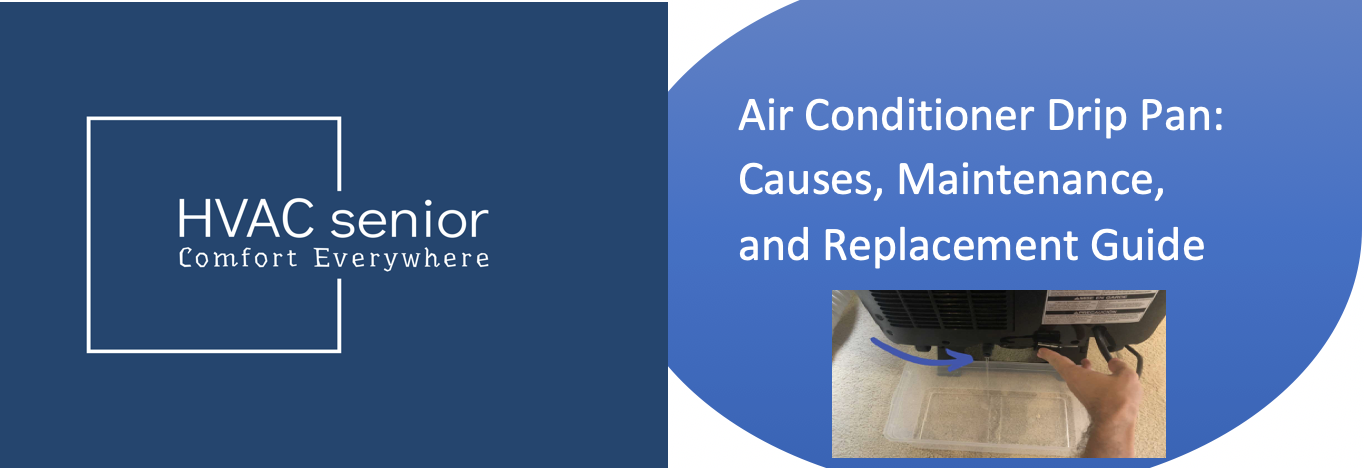Introduction
When your air conditioner runs on a hot day, it doesn’t just cool the air — it also removes humidity from your home. That moisture has to go somewhere, and that’s where the air conditioner drip pan comes in. Often overlooked, this small but essential component protects your system and your home from water damage.
This is extremely helpful whether you are a homeowner, an HVAC technician, or perhaps a DIY enthusiast. In this article, we will discuss what it is, what common problems occur, and how to maintain or replace it for maximum efficiency.
What is an Air Conditioner Drip Pan?
The drip pan, also known as a condensate pan or an evaporator coil pan, is a shallow metal or plastic tray that is located underneath the evaporator coil of your AC system. As warm indoor air passes over the coil, condensation forms and falls into the pan. From there, the water flows through the condensate drain line and exits your home safely.
Types of Air Conditioner Drip Pans
Primary Drip Pan
Located directly below the evaporator coil in the air handler. It collects water generated during normal cooling operation.
Secondary Drip Pan (Emergency Pan)
Located below the air handler or furnace in attic installations or horizontal units. It serves as a backup if the primary pan or drain line has failed.
Also read: Air Conditioner Insulation
Why the Drip Pan Is So Important
This drip pan for your air conditioner plays a critical role in preventing leaks, mold, and structural damage. Without it, condensation would overflow and soak insulation, ceilings, or flooring, which could lead to extremely costly repairs.
Here’s why it matters:
- Prevents Water Damage: Captures condensation and safely directs it outside.
- Stops Mold and Mildew: Standing water can facilitate the growth of fungus.
- Electrical Component Protection: Water cannot reach either the fan motor or the wiring.
- Efficiently Cools: Any blockage or crack in the pan affects the cooling process.
Common Problems with Air Conditioner Drip Pans
Over time, your drip pan can develop issues that affect your AC performance. Let’s look at the most frequent problems.
1. Rust or Corrosion
Metal pans rust from constant exposure to moisture. Weakening results with corrosion, which may also cause tiny holes, thus leading to leaks. If you see brown stains or tiny pieces of rust, then it is definitely time for a pan replacement.
2. Cracks or Leaks
Plastic pans, especially older ones, may crack or warp from temperature changes or age. Even small cracks can lead to water damage over time.
3. Clogged Drain Line
If the drain line for condensate gets blocked with algae, dust, or sludge, water backs up and overflows the pan. This is one of the most common causes of leaks around indoor AC units.
4. Improper Installation
A misaligned or tilted drip pan won’t drain properly, causing standing water and potential overflow. It can also raise the level of humidity indoors.
5. Mold or algae growth
Water that stagnates in the drip pan could become a breeding ground for bacteria and algae. It may, after some time, develop unsavory odors and clog the drain line.
Also read: Common Problems with PTAC Units
Signs Your Air Conditioner Drip Pan Needs Attention
Early warnings can save you from serious problems later on. Watch for the following symptoms:
- Water leaking around your air handler or ceiling
- Musty or moldy smell coming from the vents
- Visible rust, cracks, or standing water in the pan
- Water dripping from the secondary drain line
- AC shutting off due to a triggered float switch
If you notice any of these signs, it’s time to inspect the drip pan immediately.
How to Inspect Your Drip Pan
Follow these steps to safely inspect your air conditioner drip pan:
- Turn Off the System – Switch off your HVAC unit at the thermostat and breaker.
- Find the Pan – For central systems, the drip pan is most often found under the evaporator coil within the air handler.
- Use a Flashlight – Check for standing water, rust, or cracks.
- Check the Drain Line – Ensure it’s not clogged or backed up.
- Look for Overflow Switches: If tripped, they indicate excess water.
A quick inspection every few months will save your home from major water damage and keep your AC running smoothly.
How to Clean an Air Conditioner Drip Pan
Regular cleaning prevents the growth of algae and clogs. Here is a simple procedure:
Materials Needed
- Wet/dry vacuum
- Mild detergent or vinegar
- Soft brush or cloth
- Pipe cleaner or small brush for drain line
Steps
- Switch off the power supply to the AC.
- Vacuum out standing water from the pan.
- Scrub the pan with detergent or a mixture of water and vinegar.
- Flush the drain line with a solution of 50/50 vinegar and water to remove buildup.
- Dry thoroughly before restarting the system.
Algaecide tablets can also be used in the pan to prevent mold and slime growth.
When to Replace Your Air Conditioner Drip Pan
If the pan itself is rusted, cracked, or leaking, cleaning won’t help; replacement is the best option.
Replacement Steps:
- Switch off the power to your HVAC system.
- Remove the access panel to get to the evaporator coil.
- First, disconnect the drain line and any sensors.
- Remove the old pan by unscrewing it.
- Set a new drip pan in place, ensuring it is level.
- Reattach the drain line and then test your system.
Replacement pans come in various materials to include galvanized steel, stainless steel, and durable plastic. For corrosion resistance, stainless steel is usually the better long-term investment.
How to Avoid Leaks Around Drip Pans
Preventive maintenance can extend the life of your AC drip pan and keep your system efficient.
Maintenance Tips
- Flush the drain line with vinegar every 3–6 months.
- Inspect for rust or cracks at each service visit.
- Apply algaecide tablets to avoid microbial buildup.
- Keep filters clean to avoid dust and debris from going into the drain.
- Install a float switch to turn off the AC in case the pan overflows.
Besides that, regular maintenance improves indoor air quality and ensures energy efficiency.
Cost of Repair or Replacement
The replacement cost of an air conditioner drip pan depends on the type and the design of the system:
- Primary drip pan replacement: $150–$350
- Secondary drip pan (for emergencies) : $50-$150
- Labor costs: $100–$250 depending on access and complexity
Although it may seem like an additional expense, early replacement of a damaged pan can save you thousands later in water damage repairs.
Professional vs. D-I-Y
Simple cleaning and inspection can be done by a homeowner themselves, but as far as replacement is concerned, engaging professional HVAC technicians is suggested. Moreover, professionals can check deeper issues like:
- Damaged evaporator coils
- Clogged condensate pumps
- Improper system drainage
- Hidden leaks in the attic or ducts
If continuous leaks are observed even after cleaning, call in a certified technician.
Conclusion
Your air conditioner drip pan may not be the most conspicuous part of your HVAC system, but it is one of the most important pieces thereof. Keeping it clean, functional, and free of leaks saves your home from water damage, mold growth, or efficiency problems in your cooling system. Regular maintenance such as cleaning, inspecting, and, when necessary, replacing extends the life of your AC and ensures a continuously comfortable and healthy home throughout the year.















